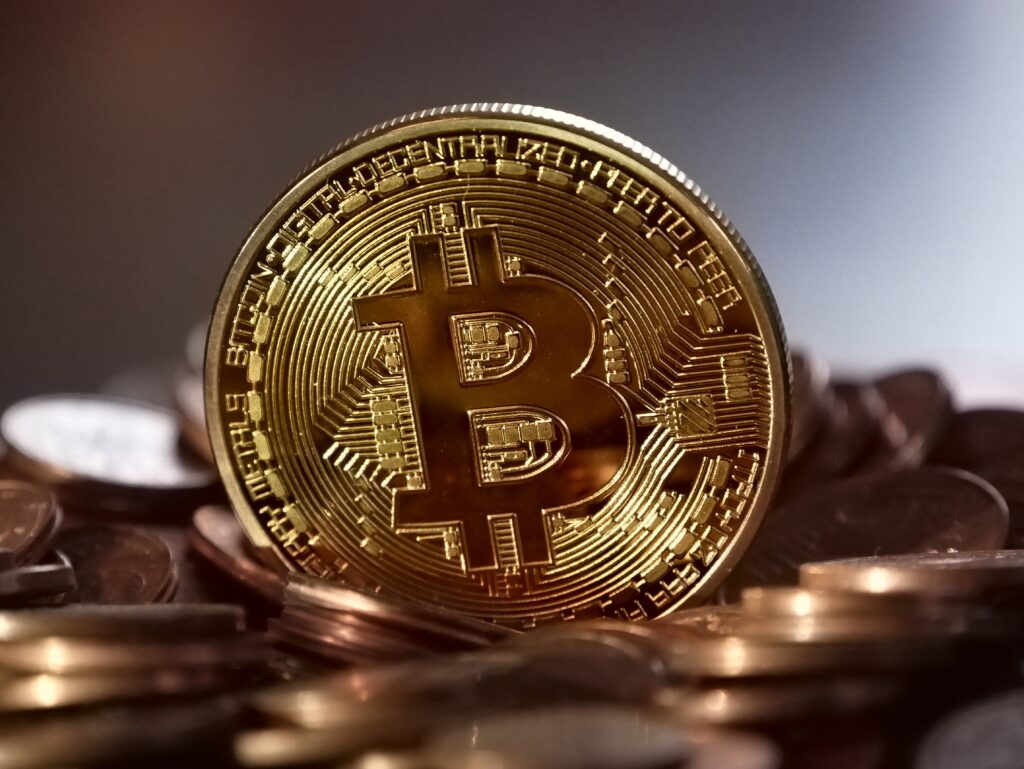Unlocking the Future: Cryptocurrency and Blockchain Revolution

Unlocking the Future: Cryptocurrency and Blockchain Revolution
In the ever-evolving landscape of finance and technology, few innovations have sparked as much excitement and controversy as cryptocurrency and blockchain. These disruptive technologies have not only transformed the way we perceive money but have also paved the way for a decentralized future. In this article, we’ll delve into the fascinating world of cryptocurrency and blockchain, exploring their potential, impact, crypto trading, crypto mining, crypto prices and what lies ahead.

The Rise of Cryptocurrency
Cryptocurrency, often referred to as digital or virtual currency, is a form of currency that utilizes cryptographic techniques to secure financial transactions, control the creation of new units, and verify the transfer of assets. Bitcoin, the first and most well-known cryptocurrency, burst onto the scene in 2009, introducing the world to the concept of decentralized digital currency crpto coin mining. Since then, thousands of cryptocurrencies have emerged, each with its unique features and purposes.
One of the key advantages of cryptocurrency is its decentralized nature. Unlike traditional currencies, which are controlled by governments and financial institutions, cryptocurrencies operate on decentralized networks based on blockchain technology.
Understanding Blockchain Technology
At the heart of cryptocurrency lies blockchain technology. Blockchain is a distributed ledger that records all transactions across a network of computers, ensuring transparency, security, and immutability. Each block in the blockchain contains a cryptographic hash of the previous block, creating a chain of blocks that cannot be altered without consensus from the network participants.
Blockchain technology has far-reaching implications beyond cryptocurrency. Its decentralized and transparent nature makes it suitable for a wide range of applications, including supply chain management, identity verification, voting systems, and more. By eliminating the need for intermediaries and central authorities, blockchain has the potential to revolutionize various industries and democratize access to information and resources.
Read Also –Trusted online earning websites – Watching Ads,
The Impact of Cryptocurrency and Blockchain
The impact of cryptocurrency and blockchain extends beyond the realm of finance. These technologies have the potential to disrupt traditional systems and empower individuals and communities worldwide. Here are some ways in which cryptocurrency and blockchain are reshaping the future:
1. Financial Inclusion: Cryptocurrency provides access to financial services for the unbanked and underbanked populations, allowing them to participate in the global economy without relying on traditional banking infrastructure.
2. Decentralized Finance (DeFi): DeFi refers to a movement that aims to recreate traditional financial systems, such as lending, borrowing, and trading, using blockchain technology. DeFi platforms offer users greater control over their finances and eliminate the need for intermediaries.
3. Tokenization of Assets: Blockchain enables the tokenization of real-world assets, such as real estate, art, and commodities, allowing for fractional ownership, increased liquidity, and efficient asset transfer.
4. Smart Contracts: Smart contracts are self-executing contracts with the terms of the agreement directly written into code. They enable automated and trustless transactions, streamlining processes across various industries.
The Future of Cryptocurrency and Blockchain
As we look ahead, the future of cryptocurrency and blockchain appears promising yet uncertain. While these technologies hold immense potential, they also face challenges such as regulatory uncertainty, scalability issues, and environmental concerns related to energy consumption.
Nevertheless, the momentum behind cryptocurrency and blockchain continues to grow, fueled by technological advancements, increasing adoption, and the quest for innovation. From mainstream acceptance and integration into existing systems to the emergence of new use cases and applications, the possibilities are endless.
In conclusion, cryptocurrency and blockchain represent a paradigm shift in how we perceive and interact with money, data, and trust. While the journey towards widespread adoption may be fraught with challenges, the transformative potential of these technologies cannot be ignored. As we navigate this new frontier, let us embrace the opportunities, overcome the obstacles, and unlock the boundless possibilities of the decentralized future.
References:
– Nakamoto, S. (2008). Bitcoin: A Peer-to-Peer Electronic Cash System. Retrieved from https://bitcoin.org/bitcoin.pdf
– Buterin, V. (2013). Ethereum: A Next-Generation Smart Contract and Decentralized Application Platform. Retrieved from https://ethereum.org/en/whitepaper/

Is crypto legal in India?
As of my last update in January 2022, the legal status of cryptocurrency in India has been a topic of discussion and debate. Cryptocurrency trading and ownership have faced regulatory uncertainty in the country.
In March 2020, the Supreme Court of India lifted the Reserve Bank of India’s (RBI) ban on banks providing services to cryptocurrency-related businesses. This decision was seen as a positive development for the cryptocurrency industry in India, leading to increased interest and investment in cryptocurrencies.
However, despite the lifting of the ban, there has been ongoing speculation about potential cryptocurrency regulations in India. The Indian government has expressed concerns about the use of cryptocurrencies for illegal activities and the potential risks associated with them, such as money laundering and tax evasion.
Top 10 cryptocurrency:-
1. Bitcoin (BTC):
– Bitcoin is the first and most well-known cryptocurrency, created by an anonymous person or group of people using the pseudonym Satoshi Nakamoto in 2009.
– It operates on a decentralized network and serves as a digital alternative to traditional currencies, with a limited supply capped at 21 million coins.
– Bitcoin is widely used for peer-to-peer transactions, store of value, and as a hedge against inflation.crypto mine
2. Ethereum (ETH):
– Ethereum is a decentralized platform that enables developers to build and deploy smart contracts and decentralized applications (DApps).
– It was proposed by Vitalik Buterin in late 2013 and development was crowdfunded in 2014, with the network going live on July 30, 2015.
– Ether (ETH) is the native cryptocurrency of the Ethereum platform and is used to pay for transaction fees and computational services on the network. litecoin
3. Binance Coin (BNB):
– Binance Coin is the native cryptocurrency of the Binance exchange, one of the largest cryptocurrency exchanges in the world.
– It was initially launched as an ERC-20 token on the Ethereum blockchain but later migrated to Binance’s own blockchain, Binance Chain.
– BNB is used for various purposes within the Binance ecosystem, including trading fee discounts, token sales, and payments.
4. Cardano (ADA):
– Cardano is a blockchain platform that aims to provide a more secure and scalable infrastructure for the development of DApps and smart contracts.
– Founded by Charles Hoskinson, one of the co-founders of Ethereum, Cardano is known for its research-driven approach and commitment to peer-reviewed protocols.
– ADA is the native cryptocurrency of the Cardano platform and is used for transactions and staking on the network.
5. Solana (SOL):
– Solana is a high-performance blockchain platform designed for decentralized applications and crypto-currencies.
– It aims to provide fast, secure, and scalable solutions to support the growing demand for decentralized finance (DeFi) and Web3 applications.
– SOL is the native cryptocurrency of the Solana platform and is used for transactions, staking, and governance.
6. Ripple (XRP):
– Ripple is both a payment protocol and a digital currency, designed to enable fast and low-cost international money transfers.
– Unlike Bitcoin and Ethereum, which operate on decentralized networks, Ripple operates on a more centralized network maintained by the company Ripple Labs.
– XRP is used by financial institutions and payment processors to facilitate cross-border transactions and settlement.
7. Polkadot (DOT):
– Polkadot is a multi-chain blockchain platform that enables interoperability between different blockchains.
– Founded by Dr. Gavin Wood, one of the co-founders of Ethereum, Polkadot aims to create a decentralized and scalable web where users have control over their own data.
– DOT is the native cryptocurrency of the Polkadot network and is used for governance, staking, and bonding.
8. Chainlink (LINK):
– Chainlink is a decentralized oracle network that enables smart contracts to securely interact with real-world data.
– It aims to bridge the gap between blockchain technology and external data sources, enabling smart contracts to access data feeds, APIs, and payment systems.
– LINK is the native cryptocurrency of the Chainlink network and is used to incentivize node operators to provide accurate data.
9. Litecoin (LTC):
– Litecoin is a peer-to-peer cryptocurrency created by Charlie Lee in 2011, based on the Bitcoin protocol but with some modifications.
– It is often referred to as the “silver to Bitcoin’s gold” and is known for its faster transaction times and lower fees compared to Bitcoin.
– LTC is widely used for peer-to-peer transactions, online purchases, and as a testbed for new features before they are implemented on Bitcoin.
10. Stellar (XLM):
– Stellar is a decentralized platform that enables fast and low-cost cross-border transactions and remittances.
– It was founded by Jed McCaleb, one of the co-founders of Ripple, with the goal of creating a more inclusive and accessible financial system.
– XLM is the native cryptocurrency of the Stellar network and is used for transactions, remittances, and tokenizing assets.
How to buy and sell crypto?
You may also like- 10 Low-Cost Business Ideas You Can Start
Buying and selling cryptocurrencies involves several steps and can be done through various platforms. Here’s a general guide on how to buy and sell cryptocurrencies:
1. Choose a Cryptocurrency Exchange:
– Research and choose a reputable cryptocurrency exchange that supports the cryptocurrencies you want to buy or sell.
– Some popular exchanges include Coinbase, Binance, Kraken, and Bitfinex.
2. Sign Up and Verify Your Account:
– Create an account on the chosen exchange by providing necessary information such as your email address, phone number, and identity verification documents.
– Complete any additional verification steps required by the exchange, such as Know Your Customer (KYC) procedures.
3. Deposit Funds:
– Deposit funds into your exchange account using a bank transfer, credit/debit card, or other supported payment methods.
– Some exchanges may require a minimum deposit amount.
4. Buy Cryptocurrency:
– Once your account is funded, navigate to the trading section of the exchange.
– Choose the cryptocurrency you want to buy and select the trading pair (e.g., BTC/USD, ETH/BTC).
– Enter the amount of cryptocurrency you want to buy and review the order details.
– Confirm the purchase, and the cryptocurrency will be credited to your exchange account.
5. Securely Store Your Cryptocurrency:
– After buying cryptocurrency, consider transferring it to a secure wallet for long-term storage.
– Hardware wallets, such as Ledger Nano S or Trezor, offer enhanced security by keeping your cryptocurrency offline.
6. Sell Cryptocurrency:
– To sell cryptocurrency, navigate to the trading section of the exchange.
– Choose the cryptocurrency you want to sell and select the trading pair (e.g., BTC/USD, ETH/BTC).
– Enter the amount of cryptocurrency you want to sell and review the order details.
– Confirm the sell order, and the corresponding funds will be credited to your exchange account.
7. Withdraw Funds:
– Once you’ve sold cryptocurrency, you can withdraw the funds to your bank account or another payment method.
– Follow the withdrawal process on the exchange, ensuring you provide accurate banking details.
8. Stay Informed and Secure:
– Stay informed about cryptocurrency market trends, news, and security best practices.
– Enable two-factor authentication (2FA) and use strong, unique passwords to secure your exchange account.
9. Tax Considerations:
– Be aware of tax implications associated with buying, selling, and trading cryptocurrencies in your jurisdiction.
– Keep accurate records of your cryptocurrency transactions for tax reporting purposes.
10. Start Small and Learn:
– If you’re new to cryptocurrency trading, start with small amounts and gradually increase your involvement as you gain experience and confidence.
Frequently Asked Questions (FAQ)
1. What is a cryptocurrency exchange?
A cryptocurrency exchange is a digital platform that allows users to buy, sell, and trade cryptocurrencies. These platforms facilitate transactions between buyers and sellers and provide tools for trading various cryptocurrencies.
2. Are cryptocurrency exchanges safe?
While reputable cryptocurrency exchanges implement security measures to protect users’ funds and personal information, no exchange is completely immune to security breaches. It’s essential to choose well-established exchanges with robust security features and to follow best practices for safeguarding your account, such as enabling two-factor authentication (2FA) and using strong passwords.
3. How do I choose the right cryptocurrency exchange?
When choosing a cryptocurrency exchange, consider factors such as security, supported cryptocurrencies, trading fees, user interface, customer support, and regulatory compliance. Research different exchanges, read user reviews, and compare their features before making a decision.
4. Can I buy cryptocurrency with fiat currency?
Yes, many cryptocurrency exchanges support fiat-to-cryptocurrency trading pairs, allowing users to buy cryptocurrencies using traditional fiat currencies such as USD, EUR, or GBP. You can typically fund your exchange account with a bank transfer, credit/debit card, or other supported payment methods.
5. What is the difference between a market order and a limit order?
A market order is an order to buy or sell a cryptocurrency at the current market price. It executes immediately but may result in slippage, especially during periods of high volatility. A limit order, on the other hand, allows you to set a specific price at which you want to buy or sell a cryptocurrency. It may not execute immediately if the market price does not reach your specified price.
6. Do I need a wallet to buy and sell cryptocurrencies on an exchange?
While some cryptocurrency exchanges offer built-in wallets for storing your cryptocurrencies, it’s generally recommended to use a separate wallet for enhanced security. Hardware wallets, such as Ledger Nano S or Trezor, offer offline storage and are considered one of the safest options for storing large amounts of cryptocurrency.
7. What are the tax implications of buying and selling cryptocurrencies?
Tax laws regarding cryptocurrencies vary by jurisdiction, so it’s essential to consult with a tax professional familiar with cryptocurrency regulations in your country. In many jurisdictions, buying, selling, and trading cryptocurrencies may trigger taxable events, such as capital gains or losses. Keep accurate records of your cryptocurrency transactions for tax reporting purposes.








